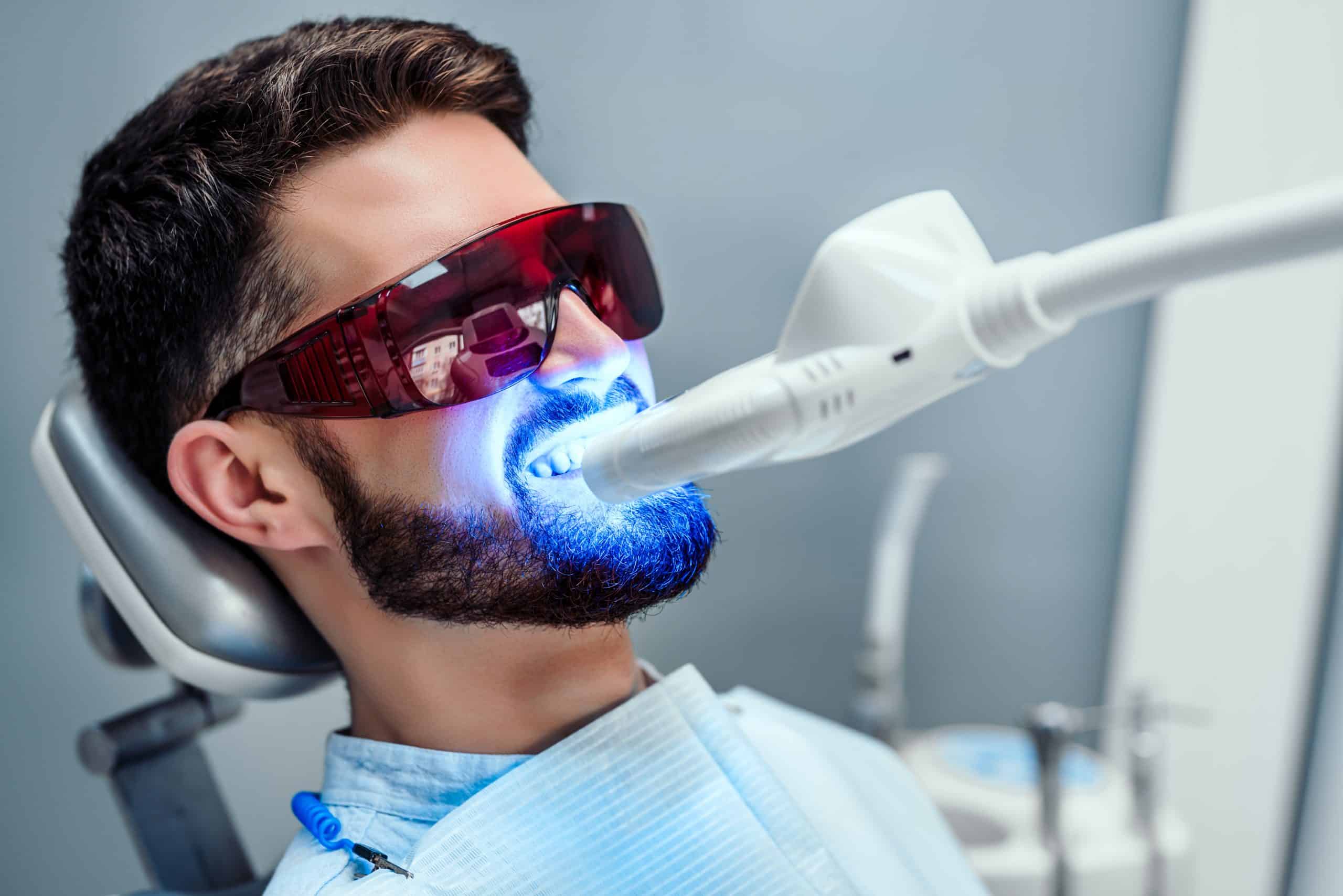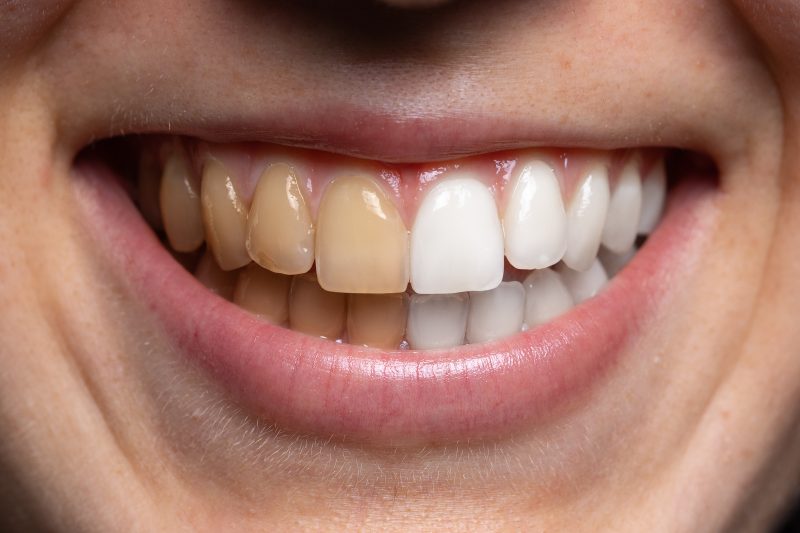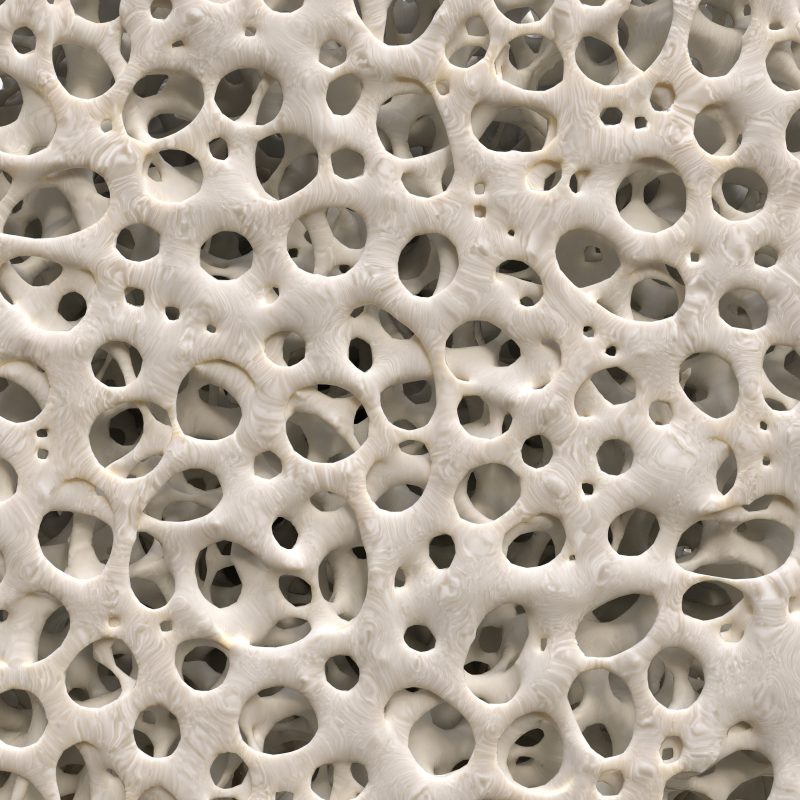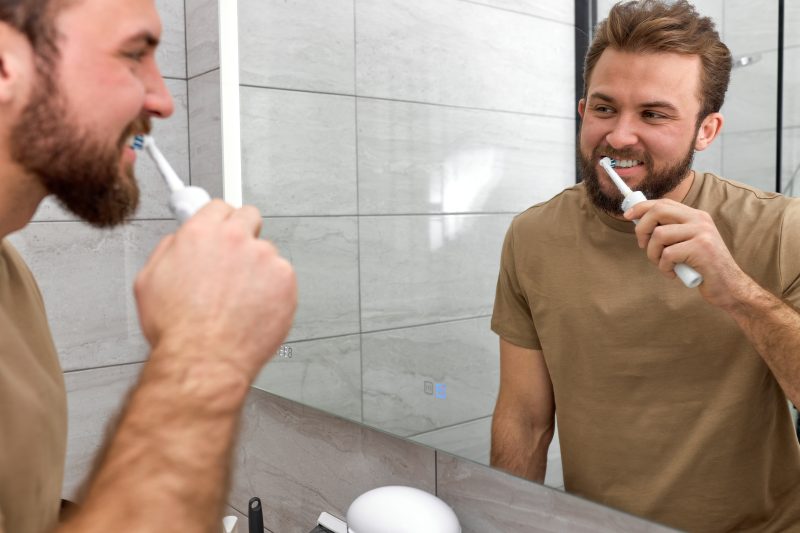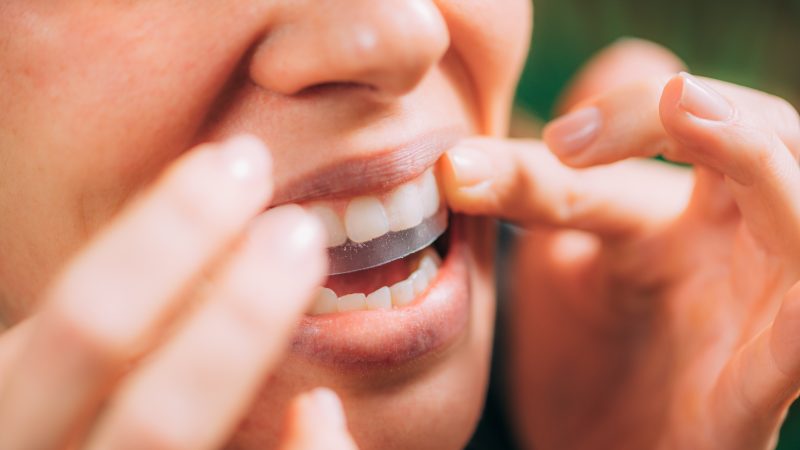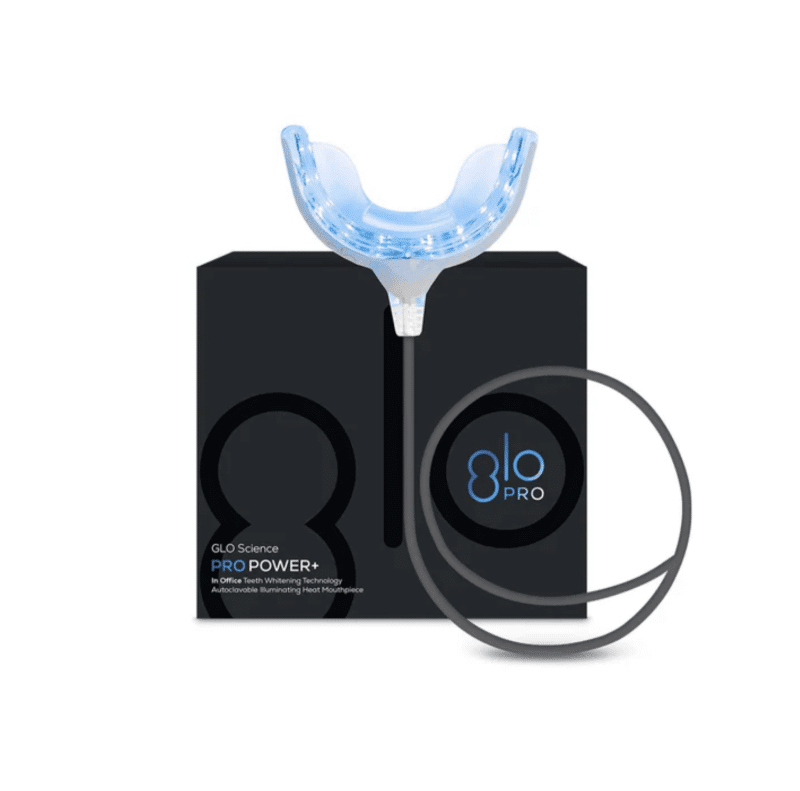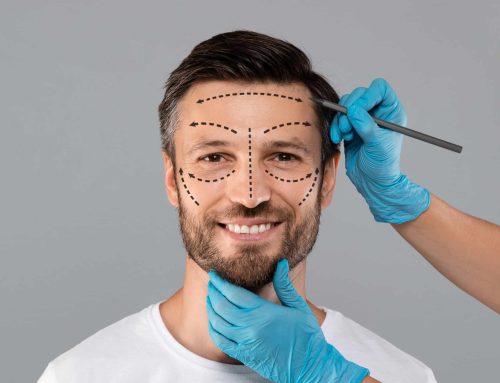The biggest bang for your buck in dentistry just might be one of the simplest and the most economical. Making your smile look better could be as easy as whitening your teeth, and there are multiple ways you can do it.
Your choices when it comes to teeth whitening, also called “bleaching,” are varied, attests Dr. Jill Wade, because there’s no one-size-fits-all approach. Your tooth color, age, and what’s caused the stains on your teeth will determine which method is right for you.
What Causes Stains on Your Teeth
Staining of your teeth can come from food, drink, and in some cases, even medication (e.g., tetracycline). Dark-colored foods—including spices—and drinks, like tea, coffee, and wine, will affect how fast your teeth are going to stain and take on a shade different from your natural color.
Dr. Jill Wade of Stonebriar Smile Design says, “Coffee is probably…the number one thing that stains teeth the most.” She claims that she drinks a lot of tea, specifically iced tea, and counts that as the second thing she attributes to the staining of teeth, at least among her Texan counterparts. Additionally, wine will also contribute to teeth staining, and as you get older, your teeth can also get darker as a result of what you’ve consumed over periods of time. Part of the reason for that is due to the internal aspects of the tooth. “Inside each one of our teeth, [there’s] a space where your nerve, blood supply, and nutrient supply lives,” explains Dr. Wade. That space, or a cavity, is very large in your younger years, but as you age, that space gets smaller as calcium and dentin increases, creating the second layer of your teeth, and making them denser. Because of this density, as with objects that are denser, you’ll have visually darker aspects to your teeth.
Dr. Wade likens your teeth to a sponge, and “if you look at a tooth under the microscope, it would…have tons of little holes in it, and some would be bigger and some would be smaller. Over the years,” she continues, “things get down into those holes and that holds on to it, and the more color [your food and drink] has, the more staining there is of the tooth.”
Considering these things, the base color of the tooth gets darker, and whitening can remedy this. Although teeth whitening is also called bleaching and the products are bleach-based, the substances used in the process do not actually harm the teeth. It’s actually a cleaning process, and just as you rinse out sponge, whitening “rinses” your teeth, effectively making them cleaner.
Your Options for Teeth Whitening
There are several ways to whiten your teeth. You could use whitening gels, trays, or even strips. Each will penetrate the tooth, get into those little microscopic holes, and using an effervescent chemical reaction, clean and lift out the stains and discoloration in those holes.
Of course, the rate at which this happens, both staining and whitening, is different for everyone, and hinges on the porous nature—or porosity—of your teeth. As some people have more porous teeth than others, it’s easy to imagine that some people’s teeth will stain faster or more heavily than those whose teeth are a little less porous. This factor could be genetic, but it could also be an indication of how someone has taken care of their teeth over the years, even down to the kind of toothpaste they used. Most of the time, however, it is genetics.
In some cases, people move towards getting veneers or porcelain overlays to improve the appearance of their teeth because they either don’t like the color of their teeth or because the whitening they have tried hasn’t produced their desired effects. The benefit to both of these enhancements is that they’re relatively impervious to staining or changing colors since there’s no porosity for the stain to adhere to or penetrate.
If you’re looking to brighten your smile and boost your self-confidence, whitening may be the way to go—because, after all, people perceive those who have whiter smiles to be healthier, more vibrant, claims health and beauty expert Laura Lewis-Edwards. Women, in particular, tend to find a prospective partner’s smile to be very important, equating the state of their teeth with their ability to take care of themselves and others, Laura goes on to explain.
Affordable Products for Whitening Your Teeth
So, maybe you want a whiter smile, but you’re looking for something a little less invasive and economical than veneers or porcelain overlays—and the biggest bang for the buck. You might think swapping your standard toothpaste for one that purports to whiten your teeth—or one that contains additives like baking soda—would be the simplest and easiest way to get started. However, Dr. Wade warns that “the only reason why they really do work is because…they’ve typically added abrasive particles…and the “grit” [in the toothpaste] is actually what is removing some of the superficial stains [on your teeth].” Though your smile may look whiter, the toothpaste is not getting into the pores of your teeth where the stains have penetrated.
Now, don’t be put off by this and toss out your toothpaste tubes promising to whiten your teeth. Companies selling oral care products have far-reaching marketing budgets, and their advertising is effective. The Colgate-Palmolive Company, which sells products across several markets, from toothpaste and deodorant to soap and cleaning products, generated nearly $19.5 billion in revenue in 2023. Meanwhile, in the same year, they spent about $2.4 billion on advertising alone, worldwide.
“Just brushing your teeth alone helps,” assures Dr. Wade. Using an electric toothbrush is helpful, too. “The ultrasonic vibration really does help make sure that the stain that is on your teeth gets off,” she continues. She adds that a peroxide-based mouthwash, something effervescent, can, over time, help whiten your teeth as well. She does caution, however, that some of the mouthwashes contain “very strong ingredients…that are bactericidal, meaning they kill bacteria.” Although this may sound like a good thing, their effective, bacteria-killing properties can actually cause dark staining at the gum line and between your teeth where you floss. Obviously, you don’t want to use a product that deposits color versus removing it, so be sure to let your dentist know what you’re using to whiten your teeth and heed their advice or recommendations.
Natural Shade vs Media
Believe it or not, most people’s natural teeth are almost the exact same color. Of course, this doesn’t apply to everyone, but Dr. Jill Wade claims that “about 70 percent of us all are born with the same shade of teeth.” That might seem hard to believe, but due to the increased exposure to the mostly unattainable beauty standards of Hollywood, manipulated photography in magazines and advertising, and, of course, the heavily filtered images blanketing social media, our perception of the natural shade of teeth is skewed towards a gleaming, bleached white found in man-made products.
Consequently, teenagers—about six out of ten use Instagram and Snapchat, following much higher percentages of use for YouTube and TikTok—are heavily influenced by what they see on social media, and teeth whitening is no exception. Because so many people whiten their teeth, teenagers are susceptible to viewing their teeth as “too dark,” affecting their self-confidence and overall image.
Gratefully, Dr. Wade has some options that are safe for teens, and she advocates for them to use these methods because their teeth tend to be more sensitive, something which can be exacerbated by the whitening process, especially in comparison to older individuals.
One option, suitable for teens or adults, is whitening strips. You can find these at your local drug store and buy them over-the-counter. “They are not a bad option to get started,” says Dr. Jill Wade. Whitening strips are economical and user-friendly since the products usually contain a “soft” bleach and, if applied properly (i.e. laid upon the surface of your teeth, avoiding the gums), you can get relatively good results without harming yourself or your teeth. There is a risk of burning the gums if using a whitening gel that is too strong and applying the strip to the gums—your gums don’t need whitening, nor do your crowns, veneers, or porcelain overlays.
In addition to whitening strips, you could also get custom-fit trays—similar to clear aligners—to use with whitening gels, and most dental offices can have them ready within a week or so. Since these trays are made specifically for your teeth, you’ll always get the perfect fit, allowing the gel to sit on your teeth rather than risk burning your gums with some other methods. The type of gel you use will determine how long you keep your trays in since the strength can vary from one product to the other. The simplest way to figure out how long you should leave the gel on would be to follow the package instructions, or if recommended by your dentist, follow their advice.
Professionally Recommended Whitening Products
If you prefer to put your teeth in the hands of a professional, you could opt for in-office whitening techniques, which takes place in a carefully controlled environment. The dentists at Stonebriar Smile Design take proper measures to protect your gums, cheeks, and lips while applying a stronger bleaching gel than you can find in stores. They can also get faster results due to the light source they use to intensify the activation and penetration of the whitening materials. Over the course of an hour, your teeth can appear up to eight shades lighter.
It’s important to note that your individual results will depend on other factors, like whether you’ve ever whitened your teeth before or how deep-set the stains are on your teeth. As for products, Dr. Wade favors Zoom Whitening and GLO® for her patients, especially for those with sensitive teeth. Both are strong and effective. She does warn, though, that while you’ve probably seen similar products on the market, many of them are not FDA approved.
For those of you who have tried multiple products and techniques but still haven’t gotten the results you want, Dr. Wade suggests a whitening system called KöR, which, according to their website is “considered…be the world’s most effective teeth whitening process…[offering] cost-effective solutions from phenomenal home whitening for average patients, to astonishing treatment of tetracycline cases and everything in-between.”
Teeth whitening doesn’t have to be scary or expensive. With multiple options, from home whitening, available in over-the-counter solutions and custom-made gel trays, to professional applications like Zoom and GLO, it’s never been easier to get whiter teeth.
Click here to watch this episode of the Beyond Face Value Show on YouTube.
Visit us on YouTube to hear more about Stonebriar Smile Design and wellness dentistry, and be sure to comment, like, and subscribe.

